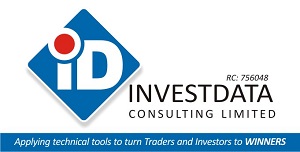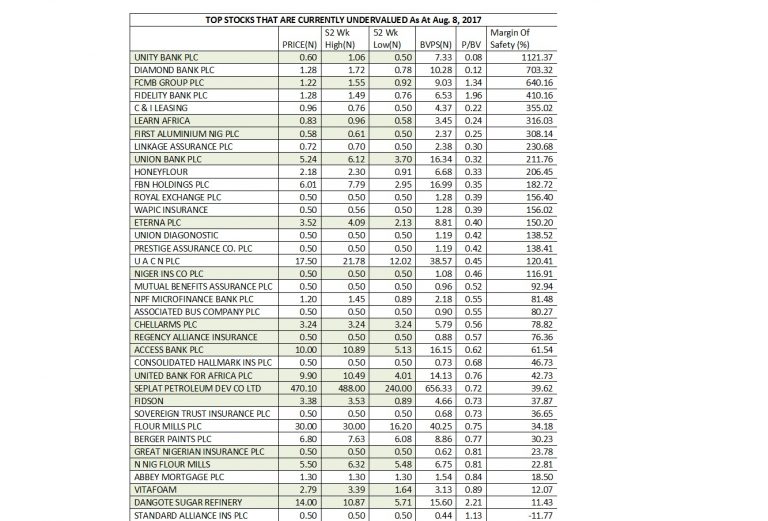The Nigerian Stock Exchange All-Share Index (NSEASI) looks set to recover all of its straight three-year loss between 2014 and 2016, way into the first half of 2017, with the Central Bank of Nigeria (CBN) foreign exchange intervention as propeller.
At the close of Tuesday’s trading session, the ASI’s year-to-date returns stood at 41.40%, just as market capitalisation over the same period improved by N4.06tr, representing a 42% growth on the year’s opening value.
Despite this robust capital appreciation across most sectors of the bourse, findings by INVESTDATA Research shows that most companies have huge potentials for capital appreciation, with most of them having high Margins of Safety calculated as the difference between the intrinsic value of a stock and its market price.
Another definition: In Break-even analysis (accounting), margin of safety is how much output or sales level can fall before a business reaches its break-even point.
As shown in the table above, INVESTDATA Research shows that while insurance banking stocks occupy the top four spots, the sector has eight banks, led by Unity Bank; while there are 10 insurance stocks, led by Linkage Assurance.
Unity Bank has a 1,121% margin of safety when its 60 kobo current price is compared to its BVPS of N7.33; followed by Diamond Bank followed with 703.32% safety margin considering its N10.28 per share to the N1.28 market price; FCMB Group has 640.16% margin, going by its N1.22 price and the N9.03 BVPS; while Fidelity Bank has a 410.16% margin, when its market price of N1.28 per share is benchmarked against its BVPS of N6.53.
Trending Today
Menu








